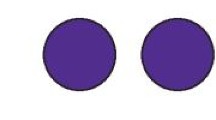Abstract
Data sources
Sources of studies were the Cochrane Controlled Trials Register, Medline and Embase. Personal files and the reference lists of all articles were checked for further studies.
Study selection
Trials were selected if they met the following criteria: there had been random allocation of participants; participants were adults with plaque and gingivitis; there was unsupervised use of dentifrices for at least 6 months; and primary outcomes were plaque and gingivitis after 6 months.
>Data extraction and synthesis
Data were extracted by two reviewers independently. For each plaque and gingivitis index, the mean differences for each study were pooled as weighted mean differences (WMD) with the appropriate 95% confidence intervals (CI) using the random effects model.
Results
Sixteen trials provided data for the meta-analysis. The triclosan/copolymer dentifrice significantly improved plaque control compared with a fluoride dentifrice, with a WMD of −0.48 (95% CI, −0.64 to −0.32) for the Quigley-Hein index and WMD of−0.15 (95% CI,−0.20 to −0.09) for the plaque severity index. When compared with a fluoride dentifrice, the triclosan/copolymer dentifrice significantly reduced gingivitis with WMD of −0.26 (95% CI, −0.34 to −0.18) and −0.12 (95% CI, −0.17 to −0.08) for the Loe and Silness index and for gingivitis.
Conclusions
This systematic review indicates that a dentifrice that contains triclosan/copolymer provides a more effective level of plaque control and periodontal health than a conventional fluoride dentifrice.
Similar content being viewed by others
Commentary
This systematic review supports, very clearly, the benefit of triclosan-containing toothpaste for reduction of plaques and gingivitis. Further, this finding was consistent in the 16 trials carried out in 7 countries that were included in the review.
The studies evaluated unsupervised brushing and thus the results should reflect what happens in every day usage by untrained patients. That said, the magnitude of the clinical impact is difficult to determine as reported in the manuscript. Data are reported as the WMD which, although a useful and meaningful measure for statisticians who must summarise data, is meaningless for a clinician or a patient. A translation of this into lay language would assist the reader in the clinical application of this information.
The authors do attempt to provide a clinical translation of the results by providing the proportion of sites with plaque and bleeding reduction: for sites with plaque the reduction was from 31% down to 16%; the reduction for bleeding sites was from 24% down to 12%. Both of these are, “…49% reduction[s].” A more understandable measure would be an absolute reduction of 15% (31 to 16%) for plaque and an absolute reduction of 12% (24 to 12%) for bleeding.
Using absolute reduction allows one to calculate a number-needed-to-treat [NNT; NNT=(1/absolute reduction)100]. This yields an NNT of 7 for plaque reduction and an NNT of 8 for bleeding. In other words, for every 7 sites with plaque that are brushed with triclosan-containing toothpaste one would be significantly reduced, compared with the use of a non-triclosan toothpaste. Similarly, for every 8 sites brushed with triclosan, one would be significantly improved compared with a non-triclosan toothpaste.
In summary, there is a statistical and clinical benefit in triclosan-containing toothpaste. This benefit would be very difficult, however, for either a patient or a clinician to identify. The remaining significant question is: do the benefits in plaque and bleeding reduction lead to a reduction in caries or periodontal disease?
Practice point
-
There is both a statistical and clinical benefit of triclosan-containing toothpaste in reduction of plaque and gingivitis.
Author information
Authors and Affiliations
Additional information
Address for correspondence: Robin Davies*, Dental Health Unit, The University of Manchester, Unit 3A, Skelton House, Manchester Science Park ,Manchester M15 6SH, UK. (*Robin Davies and Roger Ellwood are employees of Colgate Ltd, UK.)
Davies RM, Ellwood RP, Davies GM. The effectiveness of a toothpaste containing triclosan and polyvinyl-methyl ether maleic acid copolymer in improving plaque control and gingival health: a systematic review. J Clin Periodontol 2004; 31:1029–1033
Rights and permissions
About this article
Cite this article
Niederman, R. Triclosan-containing toothpastes reduce plaque and gingivitis. Evid Based Dent 6, 33 (2005). https://doi.org/10.1038/sj.ebd.6400318
Published:
Issue Date:
DOI: https://doi.org/10.1038/sj.ebd.6400318



